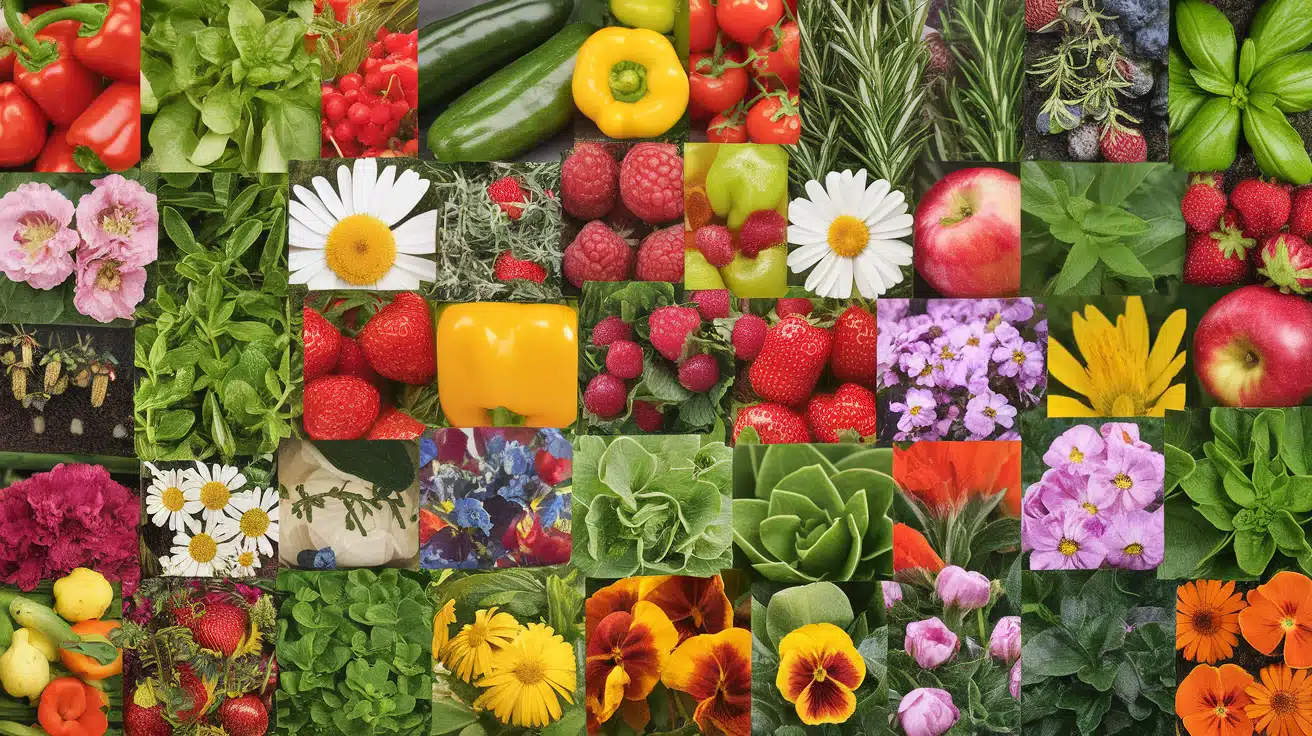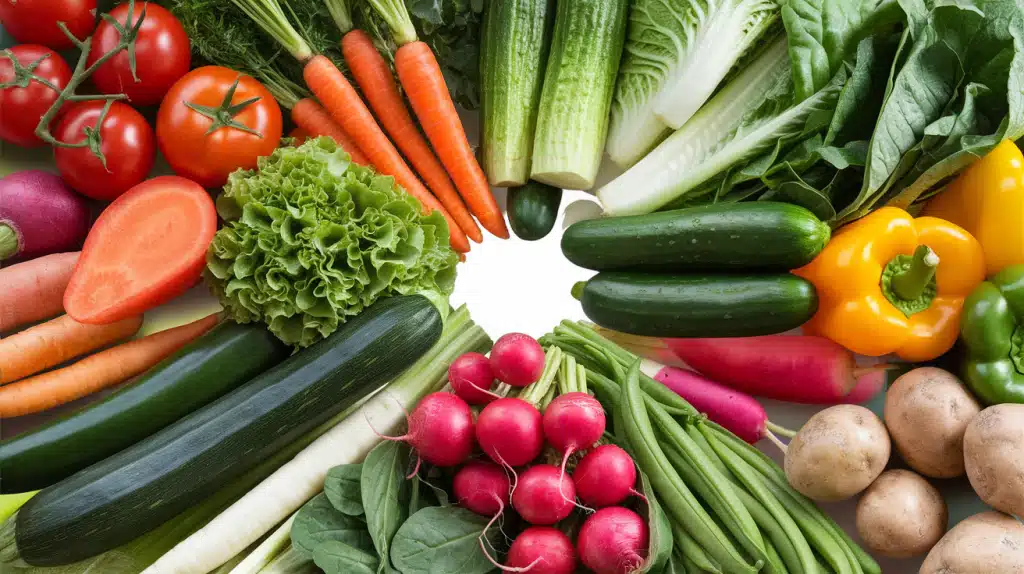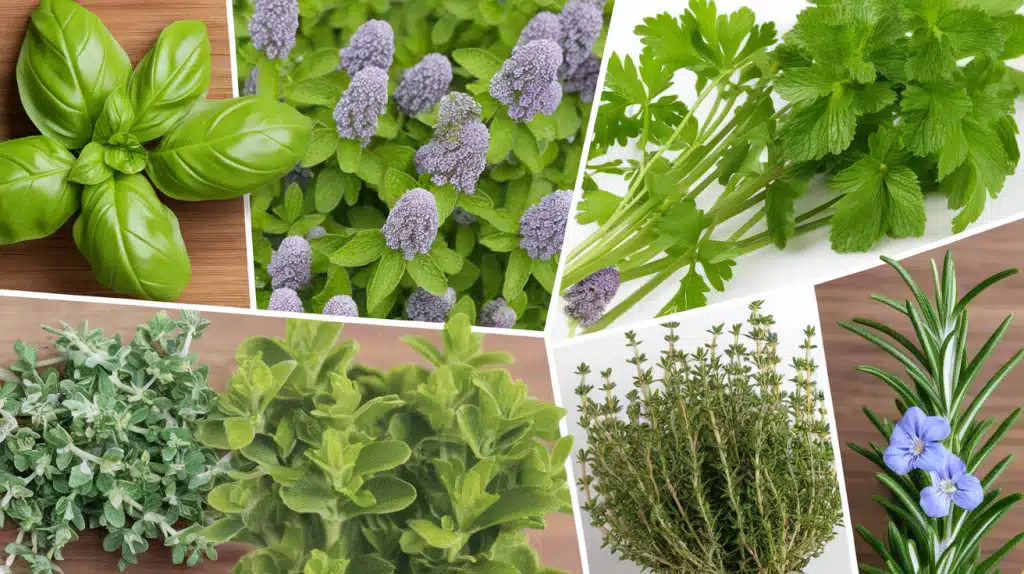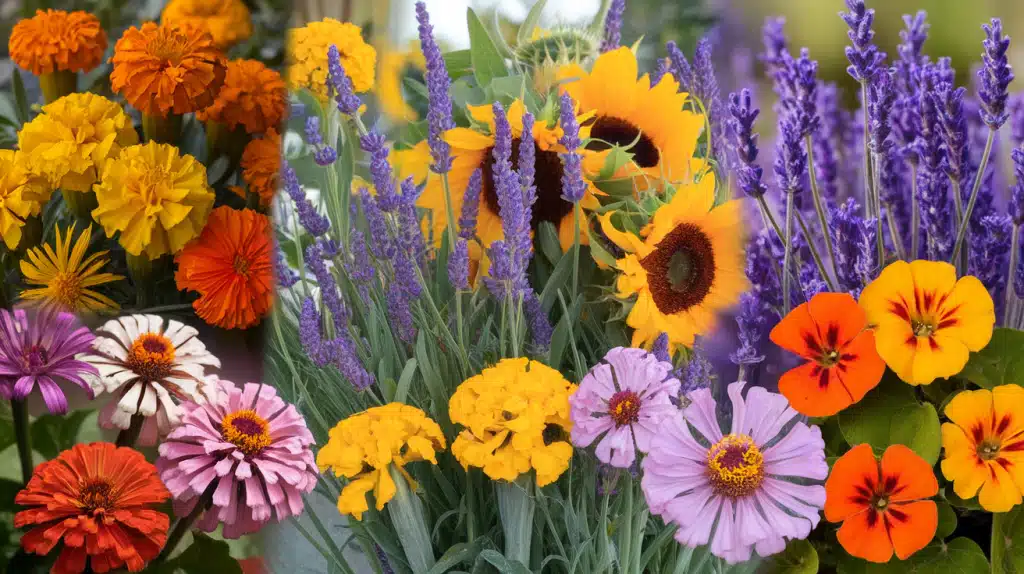Starting a garden can feel overwhelming when you’re unsure which plants will grow well. Many beginners waste money on difficult varieties that fail or produce disappointing results.
You want fresh vegetables, herbs, and flowers, but need reliable options that won’t frustrate you.
This guide solves that problem by sharing proven plants that thrive in home gardens. Each option is chosen for its ease of care, good yields, and satisfying results. You’ll get practical growing tips for vegetables, fruits, herbs, flowers, and unique additions.
From quick-growing radishes to long-producing tomatoes, these plants are suitable for both beginners and experienced gardeners. Start with a few favorites, then expand your garden as your confidence grows.
Growing your garden brings fresh food and beauty right to your backyard. These plants offer the perfect mix of easy care and rewarding results. From crisp vegetables to colorful flowers, you’ll find options for every skill level and garden size.
What Should You Grow in a Garden?
What to grow in a garden depends on four key factors that determine your success. First, consider your climate zone and local weather patterns.
Warm-season crops, such as tomatoes, require different conditions than cool-weather vegetables like lettuce. Second, evaluate your available space, from small container gardens on patios to raised beds or full backyard plots.
Third, consider your time commitment. Some plants require daily care, while others can grow with minimal attention.
Finally, decide your primary purpose: growing food for your kitchen, creating beautiful flower displays, cultivating beneficial herbs, or combining all three goals for a well-rounded garden experience.
30 Finest Things to Grow in Your Garden
Growing your own garden brings fresh food and beauty right to your backyard. These 30 plants offer the perfect mix of easy care and rewarding results. From crisp vegetables to colorful flowers, you’ll find options for every skill level and garden size.
Vegetables
1. Tomatoes: Tomatoes are the most popular home garden vegetable for good reason. They produce heavy yields and have a taste that is much better than that of store-bought varieties. Cherry tomatoes are especially easy for first-time growers.
2. Carrots: Carrots thrive in loose, sandy soil and require minimal care after planting. They can be harvested at any size, making them perfect for continuous growing. Plant seeds directly in the ground for best results.
3. Cucumbers: These fast-growing vines produce crisp, refreshing vegetables all summer long. They require warm weather and ample water to thrive. Provide a trellis or cage for vertical growing in small spaces.
4. Lettuce: Lettuce grows quickly and can be harvested multiple times from the same plant. It prefers cool weather and partial shade in hot climates. Try different varieties, such as romaine, butterhead, and leaf lettuce.
5. Bell Peppers: Bell peppers add color and crunch to your garden and kitchen. They need warm temperatures and consistent watering to produce well. Start with green varieties, which are easier to grow than colored peppers.
6. Zucchini: One zucchini plant can produce enough vegetables for an entire family. They grow rapidly in warm weather and rich soil. Harvest when young and tender for the best flavor and texture.
7. Radishes: Radishes are among the fastest-growing vegetables, ready in just 30 days. They help break up clay soil and can be planted between slower-growing crops. Their peppery flavor adds zest to salads and sandwiches.
8. Spinach: Spinach thrives in cool weather, providing nutrient-rich leaves for cooking or salads. It can be grown in spring and fall in most climates. Baby spinach leaves are tender and have a mild flavor.
9. Green Beans: Green beans are simple to grow and produce pods continuously throughout the season. Bush varieties conserve space, while pole beans require support, but yield more. Fresh beans taste significantly sweeter than their frozen or canned counterparts.
10. Potatoes: Growing potatoes is easier than most people think and very rewarding. Plant seed potatoes in loose soil and gently mound the dirt as they grow. You can harvest small “new” potatoes early or wait for full-sized ones.
Fruits
11. Strawberries: Strawberries are perfect for beginners and produce fruit in their first year. They spread naturally to create more plants over time. Plant them in raised beds or containers for easier care and harvesting.
12. Blueberries: Blueberry bushes produce fruit for decades once established in acidic soil. They need two different varieties for cross-pollination and better yields. The bushes also provide beautiful fall colors and spring flowers.
13. Raspberries: Raspberry canes produce sweet berries and are easier to grow than many people expect. They prefer well-drained soil and morning sun with afternoon shade. Summer-bearing and fall-bearing varieties extend your harvest season.
14. Apples (Dwarf Trees): Dwarf apple trees fit in small spaces and still produce full-sized fruit. They need another apple variety nearby for pollination to occur. Choose disease-resistant varieties to reduce maintenance and chemical treatments.
15. Watermelon: Watermelons require warm temperatures and ample space to spread their vines. They require consistent watering but reward you with sweet, refreshing fruit. Smaller varieties are more suitable for limited garden space.
Herbs
16. Basil: Basil thrives in warm weather and produces fragrant leaves that are perfect for Italian cooking. Pinch off flower buds to keep leaves tender and flavorful. It grows well in containers on sunny windowsills or patios.
17. Mint: Mint spreads quickly and provides refreshing leaves for teas, drinks, and cooking. Plant it in containers to prevent it from taking over your garden. Different varieties offer unique flavors like chocolate, apple, and spearmint.
18. Parsley: Parsley grows in sun or partial shade and provides vitamin-rich leaves year-round. Flat-leaf varieties have a stronger flavor, while curly types make attractive garnishes. Cut outer stems first to encourage continued growth.
19. Thyme: Thyme is a hardy perennial herb that comes back year after year. It needs well-drained soil and full sun to develop its best flavor. The small leaves pack intense flavor perfect for Mediterranean and French cooking.
20. Rosemary: Rosemary is a woody herb that tolerates drought once established in the garden. It produces fragrant, needle-like leaves and occasionally blue flowers as well. In cold climates, grow it in pots that can be moved indoors for winter.
Flowers
21. Marigolds: Marigolds repel many garden pests while producing bright orange and yellow flowers. They thrive in hot weather and poor soil conditions. Plant them near vegetables to help naturally protect your food crops.
22. Sunflowers: Sunflowers are fun to grow and can reach impressive heights in good conditions. They attract birds and beneficial insects to your garden space. Choose from a wide variety of plants or smaller types that are better suited for containers.
23. Lavender: Lavender produces fragrant purple flowers and silvery foliage that deer usually avoid. It needs well-drained soil and full sun to prevent root rot. The dried flowers can be used for crafts, cooking, and natural pest control.
24. Zinnias: Zinnias bloom continuously from summer until the first frost kills them. They come in a variety of colors and sizes to suit any garden design. Cut flowers regularly to encourage more blooms and enjoy bouquets indoors.
25. Nasturtiums: Nasturtiums produce edible flowers and leaves with a peppery flavor similar to that of watercress. They prefer poor soil and will climb or trail depending on the variety. The bright flowers attract hummingbirds and beneficial insects to your garden.
Other Unique Garden Additions
26. Aloe Vera: Aloe vera provides a natural healing gel for minor burns and skin irritation. It needs well-drained soil and protection from freezing temperatures in cold climates. The thick, fleshy leaves store water, making it very drought-tolerant.
27. Lemongrass: Lemongrass adds citrus flavor to teas, soups, and Asian cooking recipes. It forms large clumps and can be grown in containers in cold climates. The stalks can be harvested continuously throughout the growing season.
28. Chamomile: Chamomile produces small daisy-like flowers that make soothing herbal tea when dried. It often self-seeds and returns year after year in mild climates. The flowers can be harvested multiple times during the growing season.
29. Kale: Kale provides nutritious leaves for cooking and adds ornamental value with colorful varieties. It grows well in cool weather and can survive light frosts. Purple and red varieties are especially attractive in flower beds.
30. Rhubarb: Rhubarb is a perennial vegetable that produces tart stalks perfect for pies and jams. Once established, it returns every spring for many years with minimal care. Only harvest stalks in the second year after planting for healthy plant development.
Wrapping It Up
These plants give you everything needed to create a thriving home garden. From fresh vegetables like tomatoes and carrots to fragrant herbs like basil and rosemary, each option offers proven results with manageable care requirements.
Why does this matter for your gardening success? Growing your food saves money, provides better nutrition, and fosters a connection with nature. The flowers attract beneficial insects while herbs and vegetables supply your kitchen with fresh ingredients year-round.
Start small with 3-5 plants from this list that match your climate and available space. Focus on varieties you want to eat or use, then expand your garden each season. Remember that even experienced gardeners began with simple, reliable plants like these.
Ready to begin your gardening experience? Select your first plants, prepare the soil, and start growing. Your future self will thank you for the fresh produce, beautiful flowers, and sense of accomplishment that comes from growing your own garden.
What plants from this list will you try first? Share your gardening plans in the comments below!
Frequently Asked Questions
What Is the Easiest Thing to Grow in a Garden?
Radishes are one of the easiest garden plants to grow, as they mature in just 30 days with minimal care and tolerate poor soil conditions.
What Are the Best Things to Plant in a Garden?
Tomatoes, lettuce, and basil are among the best garden plants because they produce high yields, have a superior taste compared to store-bought options, and are suitable for beginners.
What Grows the Fastest in a Garden?
Radishes grow the fastest in a garden, ready to harvest in just 30 days from planting seeds.







